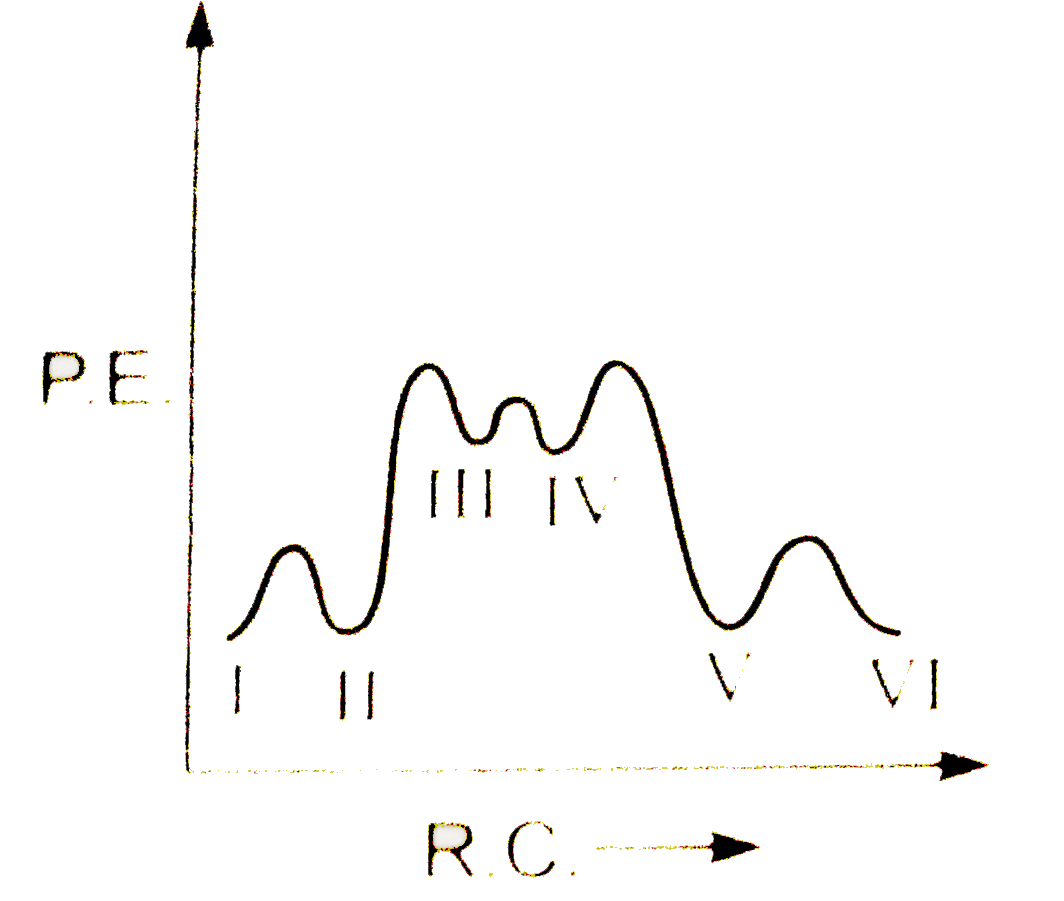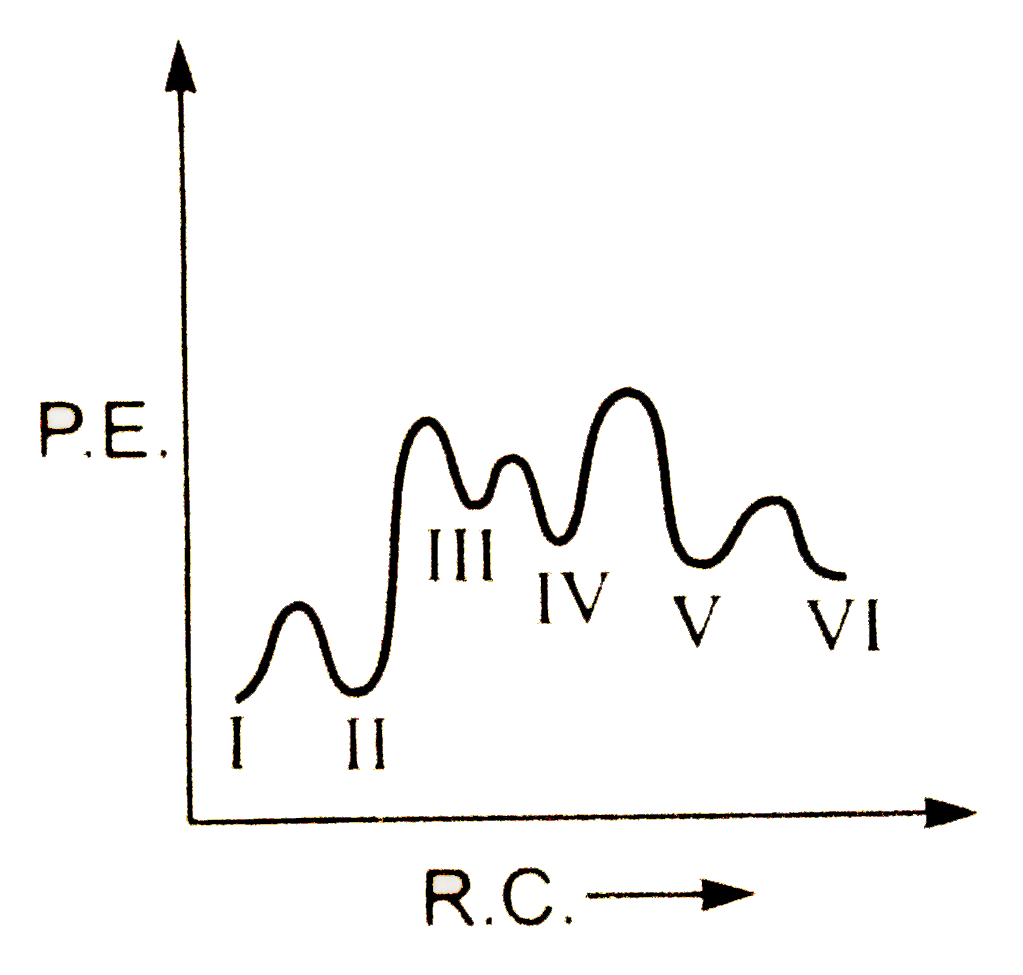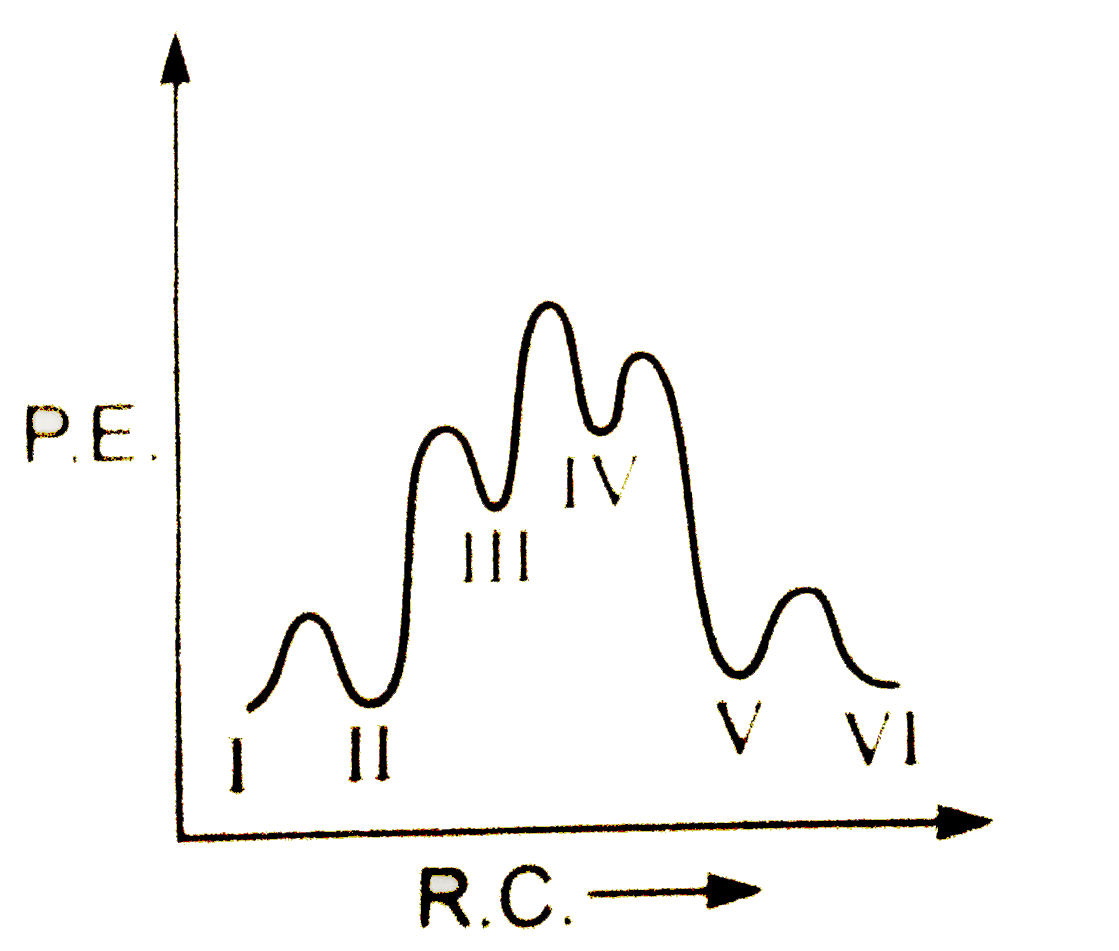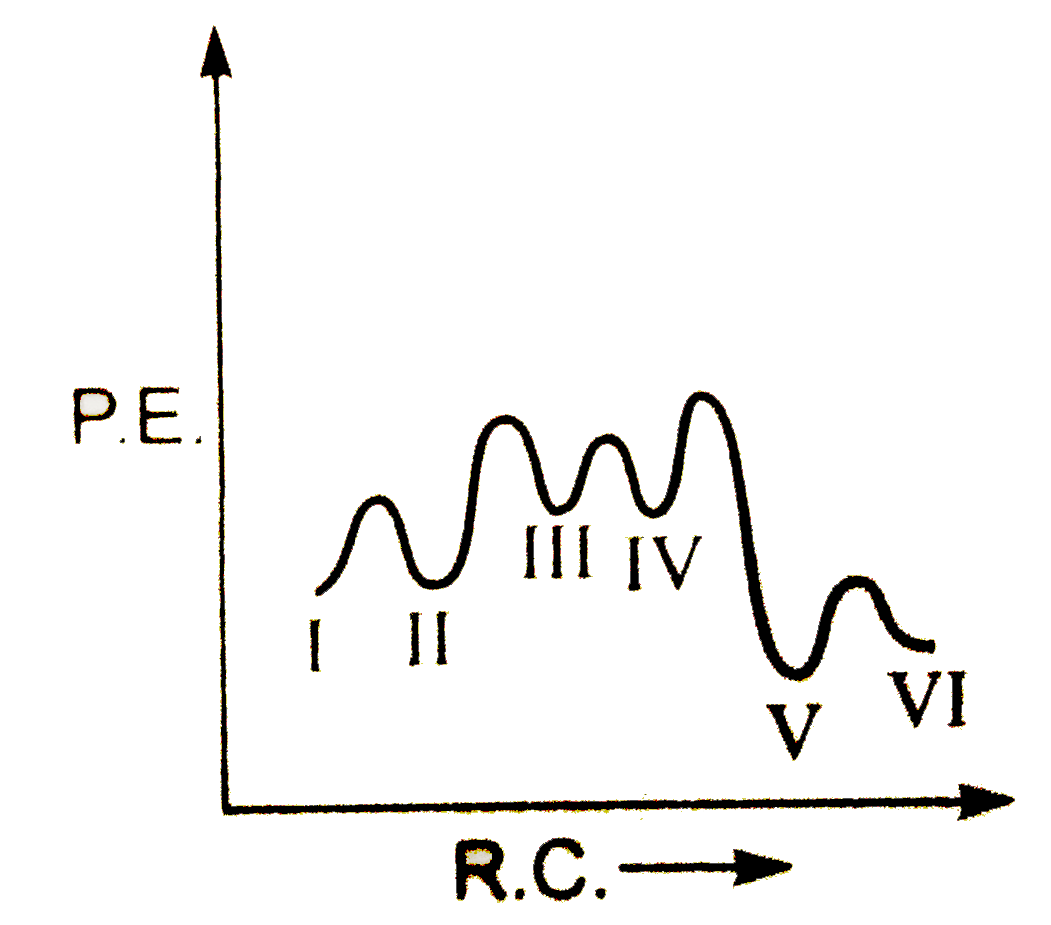Explore topic-wise InterviewSolutions in .
This section includes InterviewSolutions, each offering curated multiple-choice questions to sharpen your knowledge and support exam preparation. Choose a topic below to get started.
| 28051. |
The melting points and solubility in water of amino acids are higher than those of the corresponding haloacids. Explain. |
| Answer» Solution :The amino ACIDS EXIST as zwitterions, `H_(3) overset(+)(N)-CHR-COO^(-)`. Due to this dipolar salt like character they have strong dipole - dipole attractions or electrostatic attractions . Therefore, their melting points are higher than HALOACIDS which do not have salt like character. Further , due to salt like character , they intersect strongly with `H_(2)O`. As a result , solubility in WATER of amino acids is higher than that of the corresponding haloacids which do not have salt like character. | |
| 28052. |
The most favourable condition for the reaction,2SO_2+ O_2 iff 2SO_3 + 98kJ/mole is |
|
Answer» HIGH temperature and LOW PRESSURE |
|
| 28053. |
The melting points and solubility in water of amino acids are generally higher than that of the corresponding halo acids. Explain. |
|
Answer» amino acids exist as ZWITTER ions resulting in strong dipole-dipole attraction |
|
| 28054. |
the mostelectropositive metals are isolated from their ors by |
|
Answer» HIGH temperature reduction with carbon |
|
| 28055. |
The melting point of the group 1 elements _______ and group 17 elements________ down the group. |
|
Answer» INCREASES, DECREASES |
|
| 28056. |
The most favourable condition of temperature and pressure for the oxidation of SO_2 into SO_3 are |
|
Answer» HIGH TEMPERATUREAND low pressure |
|
| 28057. |
The most electropositive metals are isolated from their ores by |
|
Answer» high temperature REDUCTION with CARBON |
|
| 28058. |
The most electropositive metal among the following is |
|
Answer» Zns |
|
| 28059. |
The melting point of RbBr is 682^@C, with that of NaFis988^@C. The principal reason that melting point of NaF is much higher than that of RbBr is that: |
|
Answer» The two crystals are not isomorphous |
|
| 28060. |
The most electropositive metal is : |
|
Answer» Ba |
|
| 28061. |
The melting point of oxygen is very lowcompare to that of sulphur because ________. |
|
Answer» oxygen is composed of diatomic molecule while sulphur is polyatomic |
|
| 28062. |
The most electropositive element possesses the electronic configuration: |
|
Answer» `[He]2s^(1)` |
|
| 28063. |
The melting point of lithium (181^(@)C) is just double the melting point of sodium (98^(@)C) because - |
|
Answer» down the group, the hydration ENERGY DECREASES. |
|
| 28064. |
The most electropositive element is : |
|
Answer» Ga |
|
| 28065. |
The melting point of most of solid substances increase with an increase of pressure acting on them. However, ice melts at a temperature lower than its usual melting point, when the pressure increases. This is because |
|
Answer» Ice is not a TRUE SOLID |
|
| 28066. |
The most electropositive among the following is: |
|
Answer» Beryllium |
|
| 28067. |
The melting point of copper is higher than that of zinc because |
|
Answer» copper has a BCC structure |
|
| 28068. |
The mosteffectiveelectrolyte for the coagulation of As_2S_3Sol is .............. |
|
Answer» NaCl |
|
| 28069. |
The melting point (i) BeCl_(2) (ii) CaCl_(2) and (iii) HgCl_(2) follows the order |
|
Answer» (i)LT(ii)lt(III) |
|
| 28070. |
The most electro +ve element in alkali metals is |
|
Answer» Na |
|
| 28071. |
The melting and boiling points of Zn , Cd and Hg are low. Why ? Or WhyZn , Cd and Hg are soft and have low m.pt. ? |
| Answer» SOLUTION :In Zn, Cd and Hg, all the ELECTRONS in d-subshell are PAIRED. Hence, the metallic bonds present in them are weak . That is why they have low melting and boling points. | |
| 28072. |
The most effective projectile in the transmutation of heavy element is ………………. . |
|
Answer» |
|
| 28073. |
The melleable form of iron is |
|
Answer» WROUGHT iron |
|
| 28074. |
The most covalent aluminium halide ios |
|
Answer» `AlF_(3)` |
|
| 28075. |
The medicines given to patients who are violent and mentally agitated are called : |
|
Answer» Antibiotics |
|
| 28076. |
The medicines that have ability to kill the pathogenic bacteria are grouped as .............. |
| Answer» SOLUTION :ANTIBIOTICS | |
| 28077. |
The medicines/drugs taken for treatment of different ailments are taken orally in form of suspensions , tablets or capsules. To have maximum effect of the medicine at the desired site in the body , capsules are used. Earlier these capsules were made up of starch which used to get hydrolysed partly in the mouth and largely almost immediately in the stomach. But these days, the capsules are made up of some biodegradable polymer which slowly gets hydrolysed to have the effect of the drug for a longer period. Now answer the following questions : (i) Write the name of the biodegradable polymer used for making capules. (ii) What are the monomer units of this polymer ? (iii) Why does it produce desired therapeutic effect slowly ? (iv) What are the degradation products of this polymer ? |
|
Answer» Solution :(i) The name of the biodegradable polymeris : poly-`beta`- hydroxybutyrate -co-`beta`-hydroxyvalerate (PHBV). (ii) The monomer units are : `underset(3-"Hydroxybutanoic acid")underset(CH_3)underset(|)(HO-CH-CH_(2))COOH` `underset(3-"Hydroxybutanoic acid")underset(CH_2CH_3)underset(|)(HO-CH-CH_(2))COOH` (iii) The polymer contains ester bonds which are hydrolysed SLOWLY by the acid present in the stomach. The HYDROLYSIS products are the MONOMERS which are oxidised in the blood to form , `CO_2` and `H_2O`. |
|
| 28078. |
The most correct statement for transition metals is: |
|
Answer» They POSSESS low b.pt |
|
| 28079. |
The mechanism of SN1 reaction is given below : CH_(3)-underset(CH_(3)) underset(|) overset(CH_(3)) overset(|)C-Broverset("step-1")toCH_(3)-underset(CH_(3)) underset(|)overset(o+)C-CH_(3)+ overset(o+)(Br) overset(Nu)underset("step-II")to CH_(3)- underset(CH_(3)) underset(|)overset(CH_(3))overset(|)C-Nu Given answer of the following questions on the basis of the machanism given below. Whihc one of the following alkyl halides gives maximum reacemisation ? |
|
Answer» `(+)C_(6)H_(5)-overset(Cl)overset(|)CH-CH_(3)` |
|
| 28080. |
The mechanism of SN1 reaction is given below : CH_(3)-underset(CH_(3)) underset(|) overset(CH_(3)) overset(|)C-Broverset("step-1")toCH_(3)-underset(CH_(3)) underset(|)overset(o+)C-CH_(3)+ overset(o+)(Br) overset(Nu)underset("step-II")to CH_(3)- underset(CH_(3)) underset(|)overset(CH_(3))overset(|)C-Nu Given answer of the following questions on the basis of the machanism given below. In which of the following reactions, reacemisation will be maximum ? |
|
Answer» `C_(6)H_(5)-underset((+))overset(Cl)overset(|)(CH)-CH_(3) overset(80% "ACETONE")underset(30% "water")to` |
|
| 28081. |
The most dangerous method of preparing hydrogen would be by the action of HCl and : |
|
Answer» Zn |
|
| 28082. |
The most contributing tautomeric enol form of "MecCOCH"_(2)CO_(2) Et is |
|
Answer» `CH_(2) ="C (OH)CH"_(2) CO_(2) `ET 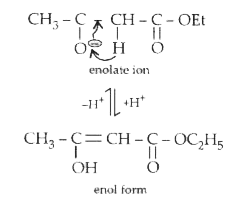 This ENOL form is stabilised due to resonance. |
|
| 28083. |
The mechanism of the reaction of ethanol with PCl_3 is ………………. . |
| Answer» SOLUTION :`SN^2` | |
| 28084. |
The most convenient method to protect the bottom of a ship made of iron is: |
|
Answer» COATING it with Red lead oxide |
|
| 28085. |
The mechanism ofesterification in presence of acid catalyst (H_(2)SO_(4)) is proposed as follows: Which of the following potential energy Vs reaction co-ordinate diagram is consitent with given mechanism ? |
|
Answer»
|
|
| 28086. |
The most contributing tautomeric enol form of MeCOCH_(2)CO_(2)Et is |
|
Answer» `CH_(2)=C (OH)CH_(2)CO_(2)Et`  This enol form is stabilized due to resonance. |
|
| 28087. |
The mechanism of friedel crafts reaction is explained by ............ theory. |
| Answer» SOLUTION :intermediatecompound FORMATION | |
| 28088. |
The most contributing tautomeric enol form of MeCOCH_(2)CO_(2) Et is: |
|
Answer» `H_(2)C=C(OH)CH_(2)CO_(2)ET` |
|
| 28089. |
The mechanism involved in Williamson's synthesis is ……………. . |
|
Answer» `E_1` |
|
| 28090. |
The mechanism for the reaction is given below 2 P + Q to S + T P + Q to R + S(slow ) P + R to T (fast) The rate law expression for the reaction is |
|
Answer» `r = k [P]^(2) [Q]` |
|
| 28091. |
The most concentrated source of energy in the human body is : |
|
Answer» NUCLEIC acids |
|
| 28092. |
The measured resistance of a conductance cell containing 7.5xx10^(-3)M solution of KCl at 25^(@)C was 1005 ohms. Calculate (a) specific conductance (b) molar conductance of the solution. Cell constant=1.25 cm^(-1). |
|
Answer» Solution :Specific coductance `(kappa)=(1)/(R)XX"CELL constant"=(1)/(1005Omega)xx1.25cm^(-1)=0.001244Omega^(-1)cm^(-1)` Molar conductance `(wedge_(m))=(kappaxx1000)/("Molarity")=(0.001244Omega^(-1)cm^(-1)xx1000cm^(3)L^(-1))/(7.5xx10^(-3)molL^(-1))` `=165.87Omega^(-1)cm^(2)mol^(-1)` |
|
| 28093. |
The most common type of reaction in aromatic compounds is |
|
Answer» Elimination reaction |
|
| 28094. |
The mechanism carbonation of organometallic compound is analogous to that of addition to |
|
Answer» ALDEHYDE and ketones |
|
| 28096. |
The measured freezing point depression for a 0.1 m aqueous CH_(3)COOH solution is 0.19^(@)C. The acid dissociation constant K_(a) at this concentration will be (Given K_(f), the moala cryoscopic constant = 1.86 K Kg mol^(-1)) |
|
Answer» `4.76xx10^(-5)` `i=(0.19)/(1.89xx0.1)=1.02` `alpha =(i-1)/(n-1)=(0.02)/(1)=2xx10^(-2)` `k_(a)=c alpha^(2)=1XX10^(-1)xx(2xx10^(-2))^(2)=4xx10^(-5)` |
|
| 28098. |
The measure of net molecular polarity is a quantity called dipole moment which is defined as the magnitude of the charge Q at either end of the molecular dipole times the distance 'r' between the charge : mu=Qxxr Molecular polarities give rise to some of the forces that occur between molecules.Such forces are termed as intermolecular forces.These molecular forces are of several different types including dipole-dipole forces, London dispersion forces, hydrogen bonds and ion-dipole forces (operate between ions and molecules).These intermolecular forces are electrical in origin and results from the mutual attraction of unlike charges or the mutual repulsion of like charges. A formal positive charge on the central atom affect the size of orbitals.A formal positive charge on central atom will pull in all electrons towards the nucleus and this will leads to the contraction in size of orbitals. Select the correct statement. |
|
Answer» In trisilyl amine , all N-Si bond lengths are bigger than that of normal N-Si single covalent bond (B)`PH_5` can not undergo `sp^3d` hybridisation as there is muchlarge difference in size of s, p and d orbitals `PH_5` does not exist as no partial POSITIVE charge DEVELOPS on P atom. (C )Dipole moment of `CH_2Cl` is greater than `CH_3F` due to greater charge sepration on carbon and chlorine atoms in `CH_3Cl`. (D) It is correct order. The strength of hydrogen bond depends upon : (i)size (ii)electronegativity and (iii) ease of donation of electron pair by electronegative element. Higher the value of electronegativity and smaller the size of covalently BONDED atom to H atom stronger is the hydrogen bonding. |
|
| 28099. |
The measured freezing point depression for a 0.1 m aqueous acetic acid solution is 0.19^(@)C. The acid dissociation constant K_(a) at this concentration will be (K_(f)= 1.86 "Km"^(-1)) |
|
Answer» `4.76xx10^(-5)` `DeltaT_(f)=iK_(f)xxm` or `i=(DeltaT_(f))/(K_(f)xxm)=(0.19)/(1.86xx0.1)=1.02` If `ALPHA` is the degree of dissociation `{:(,CH_(3)COOH,hArr,CH_(3)COO^(-),+,H^(+)),("Initial moles","1",,"0",,"0"),("After dissociation",""1-alpha,,""alpha,,alpha):}` Total number of moles after dissociation `=1-alpha+alpha+alpha=1+alpha` `i=(1+alpha)/(1)=1.02` or `alpha=0.02` Now `K_(alpha)=C alpha^(2)=0.1xx(0.02)^(2)=4xx10^(-5)` |
|
| 28100. |
The measured e.m.f. at 25^(@)C for the cell reaction Zn(s)+Cu^(2+)(1.0M)hArrCu(s)+Zn^(2+)(0.1M) is 1.3 volt. Calculate E^(@) for the cell reaction. |
|
Answer» |
|

